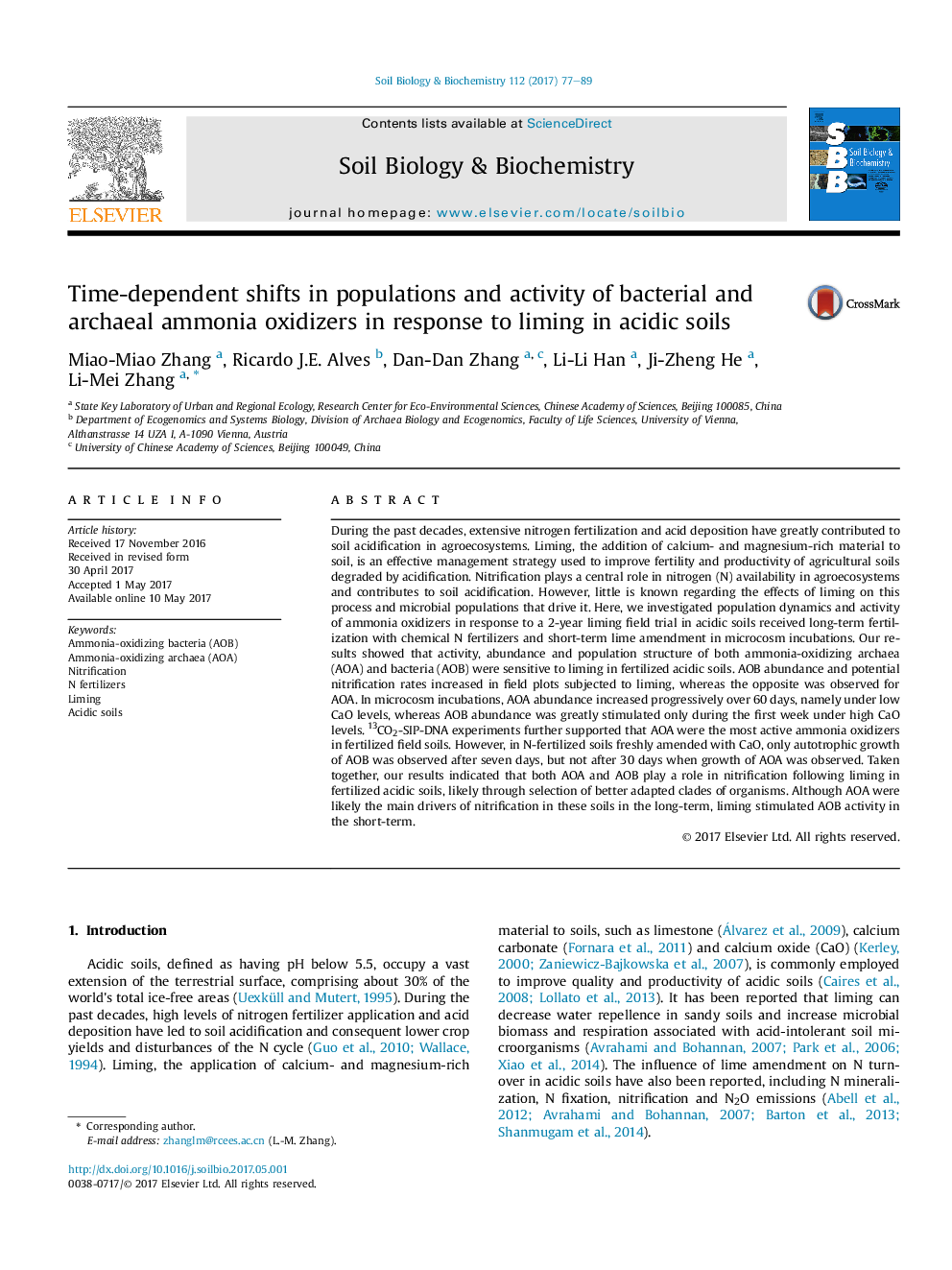| کد مقاله | کد نشریه | سال انتشار | مقاله انگلیسی | نسخه تمام متن |
|---|---|---|---|---|
| 5516339 | 1542572 | 2017 | 13 صفحه PDF | دانلود رایگان |
- Both AOA and AOB were sensitive to liming in acidic soils.
- AOA functionally dominated in acidic soils, with liming activating AOB in the short-term.
- Liming selectively stimulated or inhibited organisms from specific clades of AOA and AOB.
During the past decades, extensive nitrogen fertilization and acid deposition have greatly contributed to soil acidification in agroecosystems. Liming, the addition of calcium- and magnesium-rich material to soil, is an effective management strategy used to improve fertility and productivity of agricultural soils degraded by acidification. Nitrification plays a central role in nitrogen (N) availability in agroecosystems and contributes to soil acidification. However, little is known regarding the effects of liming on this process and microbial populations that drive it. Here, we investigated population dynamics and activity of ammonia oxidizers in response to a 2-year liming field trial in acidic soils received long-term fertilization with chemical N fertilizers and short-term lime amendment in microcosm incubations. Our results showed that activity, abundance and population structure of both ammonia-oxidizing archaea (AOA) and bacteria (AOB) were sensitive to liming in fertilized acidic soils. AOB abundance and potential nitrification rates increased in field plots subjected to liming, whereas the opposite was observed for AOA. In microcosm incubations, AOA abundance increased progressively over 60 days, namely under low CaO levels, whereas AOB abundance was greatly stimulated only during the first week under high CaO levels. 13CO2-SIP-DNA experiments further supported that AOA were the most active ammonia oxidizers in fertilized field soils. However, in N-fertilized soils freshly amended with CaO, only autotrophic growth of AOB was observed after seven days, but not after 30 days when growth of AOA was observed. Taken together, our results indicated that both AOA and AOB play a role in nitrification following liming in fertilized acidic soils, likely through selection of better adapted clades of organisms. Although AOA were likely the main drivers of nitrification in these soils in the long-term, liming stimulated AOB activity in the short-term.
Journal: Soil Biology and Biochemistry - Volume 112, September 2017, Pages 77-89
